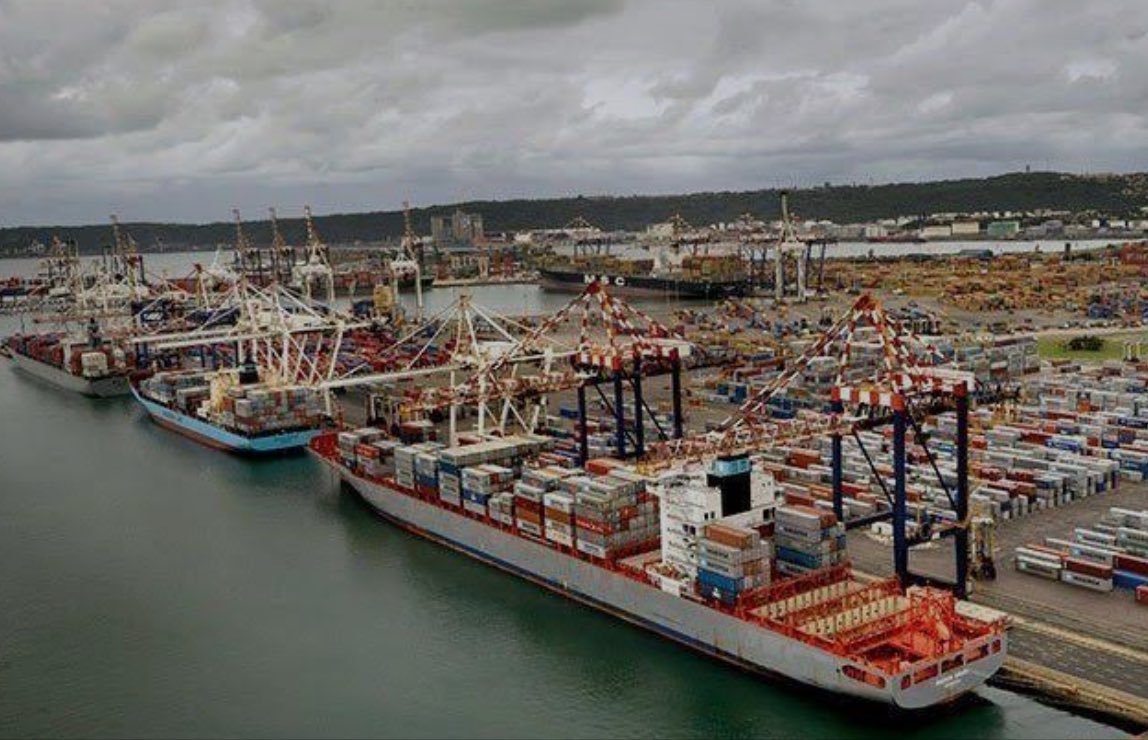Business
Stormy Waters Ahead: South Africa’s Exports Hit by Global and Local Pressures

With the world economy on shaky ground and local manufacturing slowing down, South Africa’s once-reliable export engine is starting to sputter and economists are raising red flags.
Warning Signs Are Flashing
The pulse of South Africa’s economy is often measured by how much it can sell to the world. But according to Investec economist Lara Hodes, that heartbeat is weakening.
Hodes points to a cocktail of recent indicators including a concerning drop in export sales and deteriorating global manufacturing conditions that suggest South Africa’s export momentum is likely to slow in the months ahead. A key signal was April’s Absa Manufacturing Purchasing Managers’ Index (PMI), which saw export sales slide back into contraction territory.
And it’s not just local data that’s ringing alarm bells.
The Global Picture Isn’t Pretty Either
Across the globe, April was a tough month for manufacturing. According to the JP Morgan Global Manufacturing PMI, export orders saw their sharpest drop since August 2023. Manufacturing giants worldwide are also feeling the pressure, and that has ripple effects for countries like South Africa, which rely heavily on exporting goods and raw materials.
There’s more bad news on the horizon. Hodes warns that persistent global uncertainty — particularly around tariffs and erratic U.S. trade policies — is putting additional strain on global confidence. S&P Global has echoed these concerns, saying the damage caused by shifting trade priorities isn’t going away anytime soon.
A Trade Surplus No More?
Just last week, the South African Reserve Bank (SARB) confirmed that imports outpaced exports in the first quarter of 2025. While the country’s trade balance remains relatively stable, the trend is shifting. The trade surplus narrowed by R5.2 billion as the value of goods brought into the country climbed faster than those shipped out.
Though the central bank noted that the rand price of exported goods still increased more than that of imports, slightly improving terms of trade, the warning signs are hard to ignore. In short: we may be earning more per exported item, but we’re selling fewer of them.
Public Mood: Cautious, Frustrated
Locals aren’t surprised by the news. “We’ve been feeling the pinch for a while,” said a small exporter based in Durban, who sells machine parts to the EU. “Shipping costs are up, orders are down, and we’re stuck between local red tape and international uncertainty.”
On social media, the mood is one of weary realism. “Another day, another economic red flag,” tweeted one Johannesburg analyst. “Without strong manufacturing and global demand, we’re going to struggle to grow.”
Why This Matters to Everyday South Africans
For many, these economic trends sound far removed from daily life. But when exports dip, industries like mining, agriculture, and manufacturing slow down, which often means fewer jobs, lower investment, and ultimately higher prices in stores.
South Africa’s economy is already contending with structural challenges: electricity constraints, slow reform implementation, and a volatile currency. Now, a downturn in exports could be yet another headwind against recovery.
Can South Africa Course-Correct?
It’s not all doom and gloom. Improved terms of trade, thanks in part to stronger gold prices, offer a small silver lining. And some exporters have been adapting, exploring new markets and pivoting to value-added goods.
But the bigger picture remains tense. Until global manufacturing stabilizes and local industries regain confidence, South Africa’s export future will likely remain on shaky ground.
In the meantime, policymakers and industry leaders face a tough task: keeping the country globally competitive, even as the world becomes more uncertain.
{Source: IOL}
Follow Joburg ETC on Facebook, Twitter , TikTok and Instagram
For more News in Johannesburg, visit joburgetc.com



























